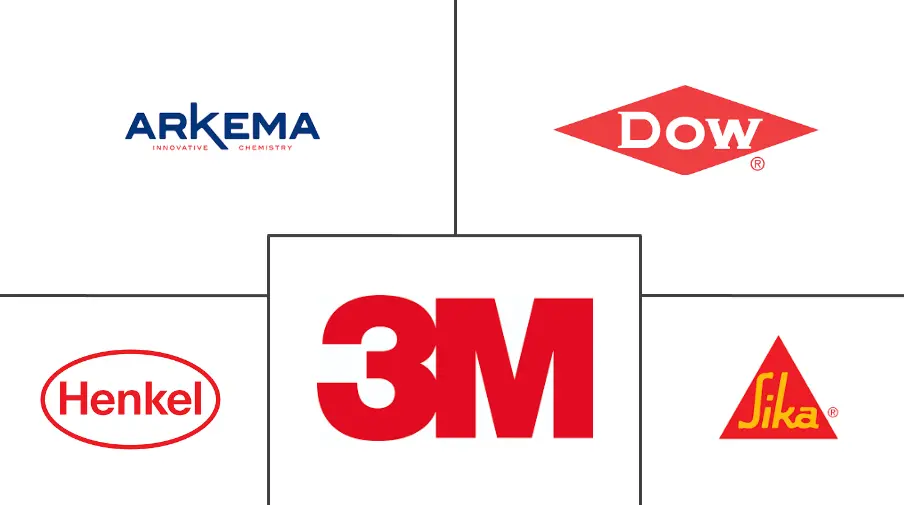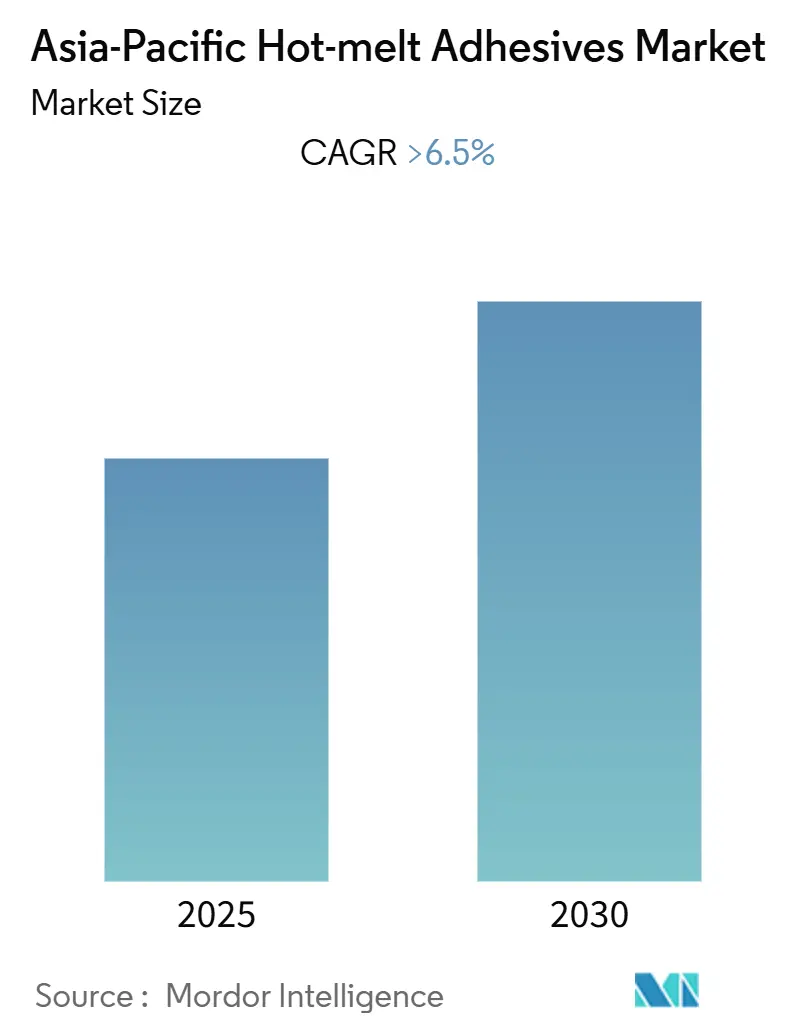
Asia-Pacific Hot-Melt Adhesives Market Analysis by Mordor Intelligence
The Asia-Pacific Hot-melt Adhesives Market is expected to register a CAGR of greater than 6.5% during the forecast period.
- Volatility in the availability and price of raw material forcing internal substitution is likely to hinder the Asia-Pacific hot-melt adhesives market growth.
- Adoption of bio-based hot-melt adhesives are projected to create opportunities to the Asia-Pacific hot-melt adhesives market growth in the coming years.
- China is expected to dominate the Asia-Pacific hot-melt adhesives market and is also expected to witness the fastest CAGR during the forecast period.
Asia-Pacific Hot-Melt Adhesives Market Trends and Insights
Rising Demand from Paper, Board and Packaging Industry
- An extremely high proportion of all industrial products are sold in packaging - either due to stability requirements for storage and transport or for aesthetic reasons.
- Hot-melt adhesives are mainstream adhesives in the paper, board, and packaging industry. It is most widely used for carton closing, sealing, and pallet stabilization.
- Applications of hot-melt adhesives range from corrugated box construction and lamination of printed sheets, to packaging materials used for all types of consumer products and the production of large industrial tubes and cores.
- Although normal envelopes and paper bags consist of just a single layer of material, most packaging materials used nowadays are of different materials laminated together.
- The most crucial market for hot-melt adhesives has been packaging. The production of tapes and labels has been experiencing immense growth. The improvement in living standards and higher incomes, especially in developing countries, have increased the demand for a broad range of products, all of which require packaging. Moreover, the growing market for e-commerce and online purchasing is providing huge support and opportunities to the hot-melt adhesives market.
- Most of the demand for packaging is from the food and beverage industry. On the other hand, healthcare products are the largest users of folding cartons. These end-user segments are likely to boost the demand for PU hot-melt adhesives in the coming years.
- The aforementioned factors have been boosting the hot-melt adhesives market, in the recent times.
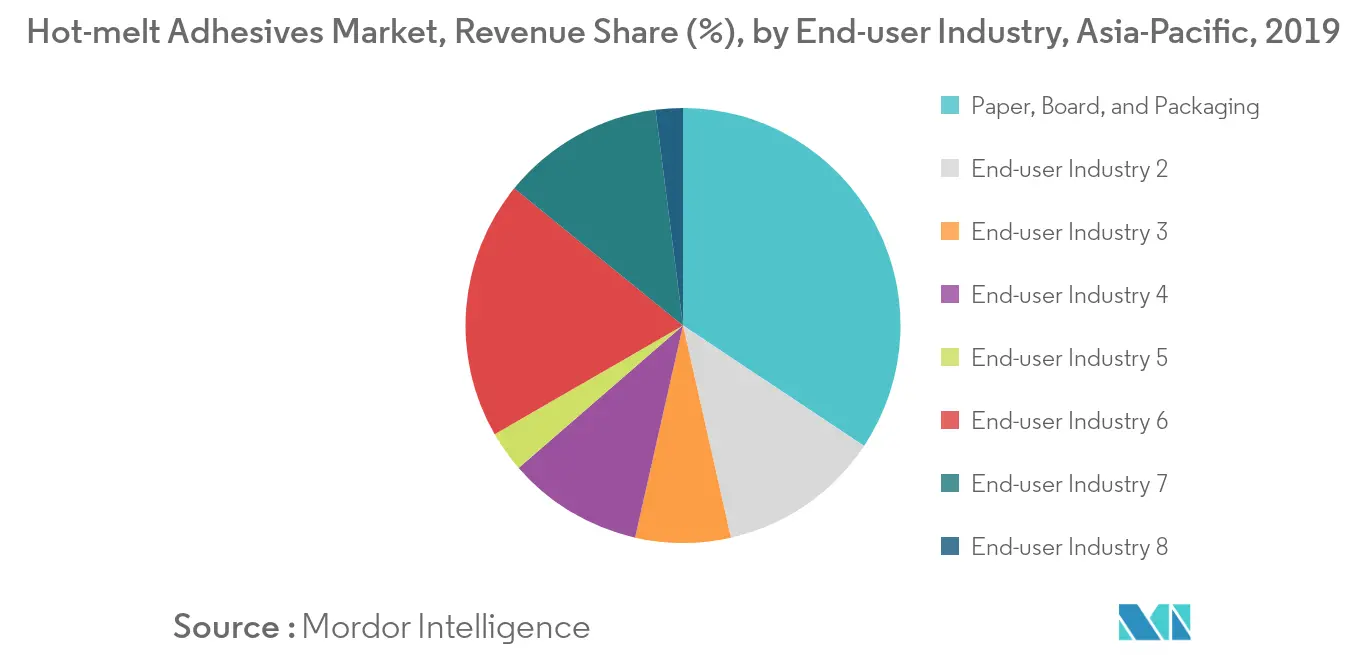
China to Dominate the Market
- China is one of the fastest-growing economies, globally, and almost all the end-user industries have been growing, owing to the rising population, living standards, and per capita income. However, owing to the international trade turbulences and unfavorable geopolitical affairs, the growth rate is expected to slow down during the initial years of the forecast period.
- China has the second-largest packaging industry in the world. The country is expected to witness a consistent growth during the forecast period, owing to the rise of customized packaging and increased demand for packaged consumerist goods in the food segment, like microwave food, snack foods, and frozen foods.
- Additionally, the Chinese footwear industry has witnessed major growth in the recent years, owing to the high demand for sports footwear. Moreover, the sports footwear market is strongly supported by government policies that promote a healthy lifestyle. By 2021, the Chinese mainland footwear market is likely to be worth around CNY 487.4 billion (USD 70.53 billion).
- China's 13th Five Year Plan started in 2016 as it was an important year for the country's engineering, procurement, and construction (EPC) industry. In addition to this, the country ventured into new business models domestically and internationally, during the year. Although the construction sector slowed down after 2013, it is still a major contributor to the GDP of the country.
- Owing to all the above-mentioned factors, the hot-melt adhesives market is expected to increase during the forecast period.
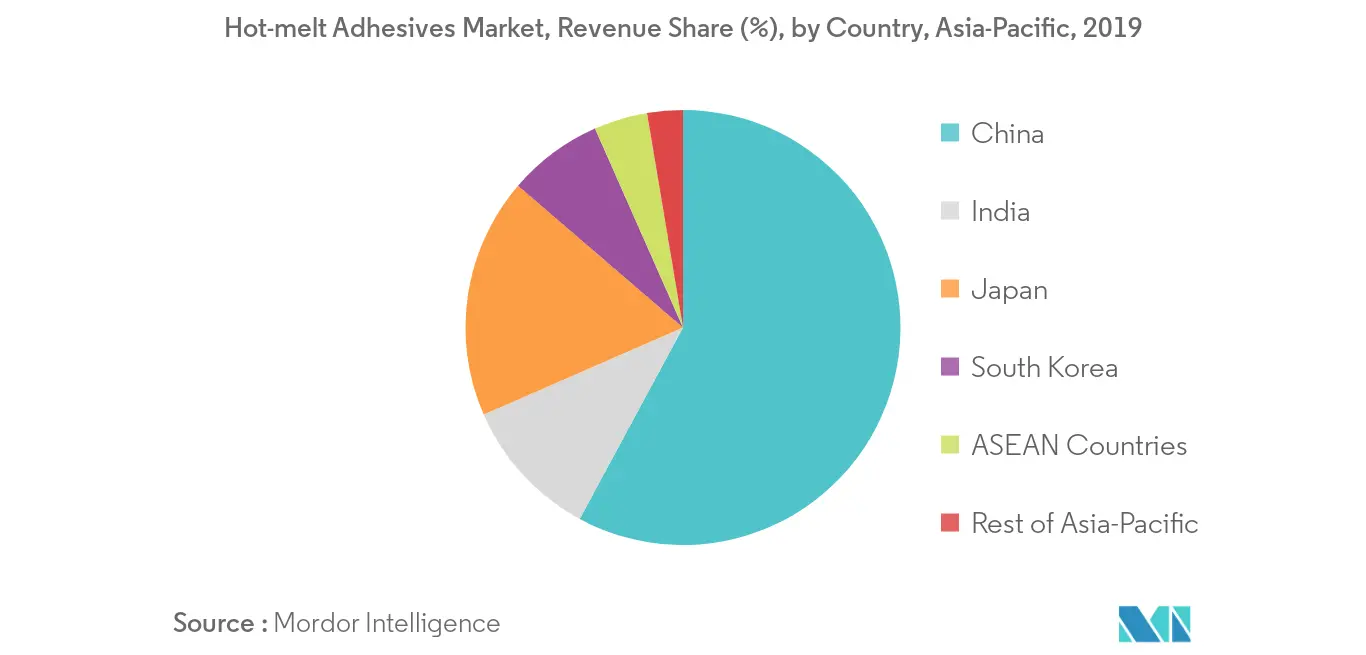
Competitive Landscape
The Asia-Pacific hot-melt adhesives market is consolidated in nature. Key players in the market include 3M, Arkema Group, Dow, Henkel AG & Co. KGaA, and Sika AG, among others.
Asia-Pacific Hot-Melt Adhesives Industry Leaders
3M
Arkema Group
Dow
Henkel AG & Co. KGaA
Sika AG
- *Disclaimer: Major Players sorted in no particular order
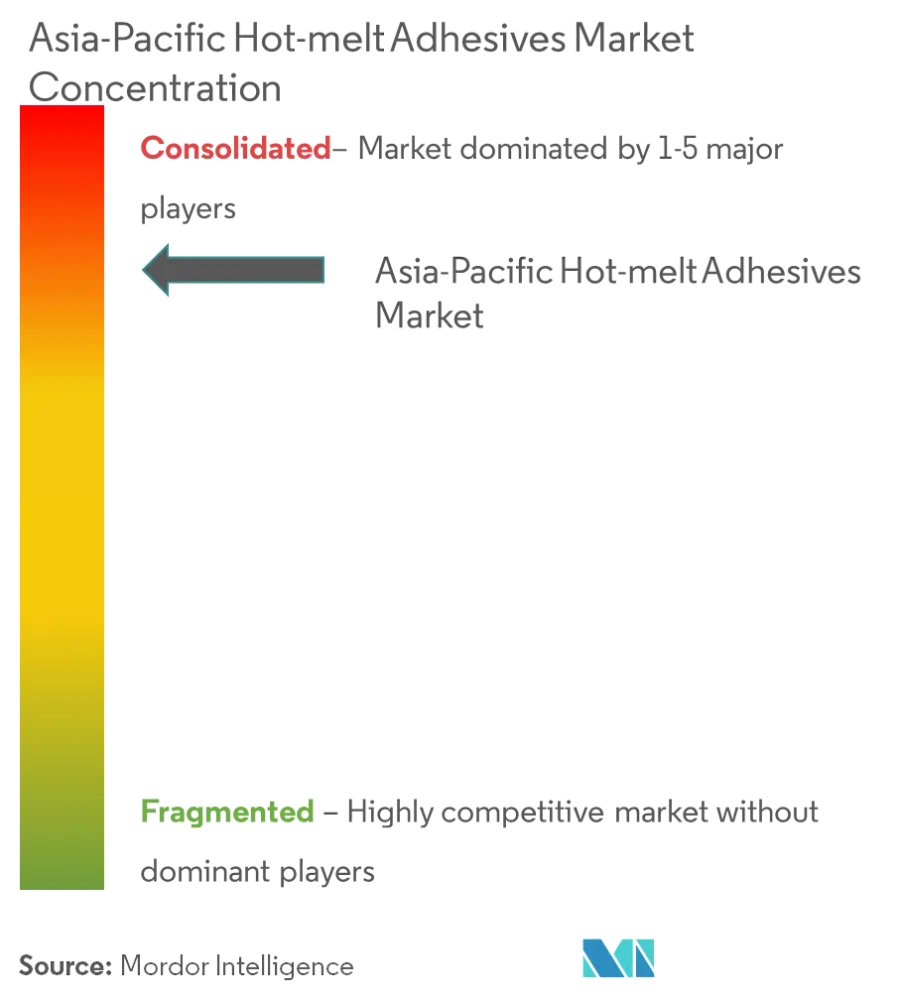
Asia-Pacific Hot-Melt Adhesives Market Report Scope
The Asia-Pacific hot-melt adhesives market report includes:
| Ethylene Vinyl Acetate |
| Styrenic-butadiene Copolymers |
| Thermoplastic Polyurethane |
| Other Resin Types |
| Building and Construction |
| Paper, Board, and Packaging |
| Woodworking and Joinery |
| Transportation |
| Footwear and Leather |
| Healthcare |
| Electronics |
| Other End-user Industries |
| China |
| India |
| Japan |
| South Korea |
| ASEAN Countries |
| Rest of Asia-Pacific |
| Resin Type | Ethylene Vinyl Acetate |
| Styrenic-butadiene Copolymers | |
| Thermoplastic Polyurethane | |
| Other Resin Types | |
| End-user Industry | Building and Construction |
| Paper, Board, and Packaging | |
| Woodworking and Joinery | |
| Transportation | |
| Footwear and Leather | |
| Healthcare | |
| Electronics | |
| Other End-user Industries | |
| Geography | China |
| India | |
| Japan | |
| South Korea | |
| ASEAN Countries | |
| Rest of Asia-Pacific |
Key Questions Answered in the Report
What is the current Asia-Pacific Hot-melt Adhesives Market size?
The Asia-Pacific Hot-melt Adhesives Market is projected to register a CAGR of greater than 6.5% during the forecast period (2025-2030)
Who are the key players in Asia-Pacific Hot-melt Adhesives Market?
3M, Arkema Group, Dow, Henkel AG & Co. KGaA and Sika AG are the major companies operating in the Asia-Pacific Hot-melt Adhesives Market.
What years does this Asia-Pacific Hot-melt Adhesives Market cover?
The report covers the Asia-Pacific Hot-melt Adhesives Market historical market size for years: 2019, 2020, 2021, 2022, 2023 and 2024. The report also forecasts the Asia-Pacific Hot-melt Adhesives Market size for years: 2025, 2026, 2027, 2028, 2029 and 2030.
